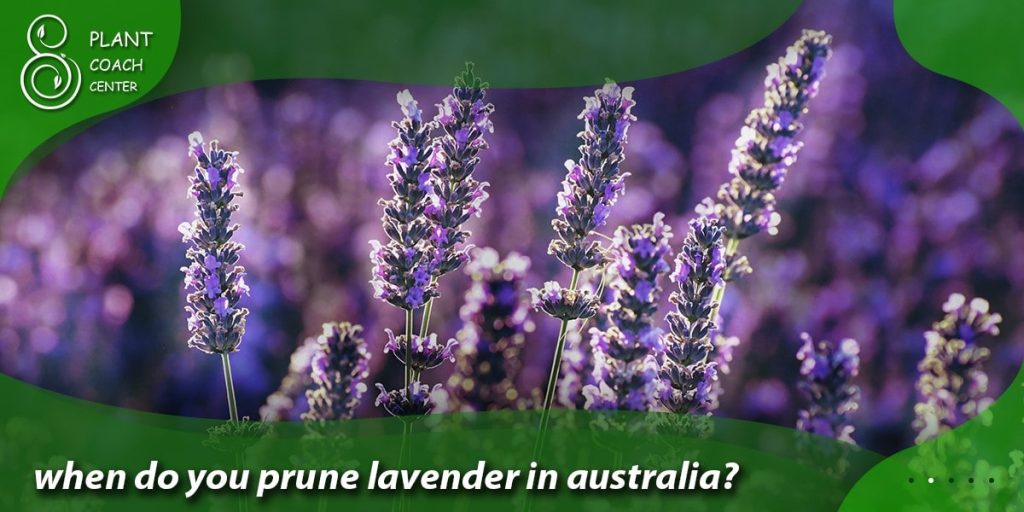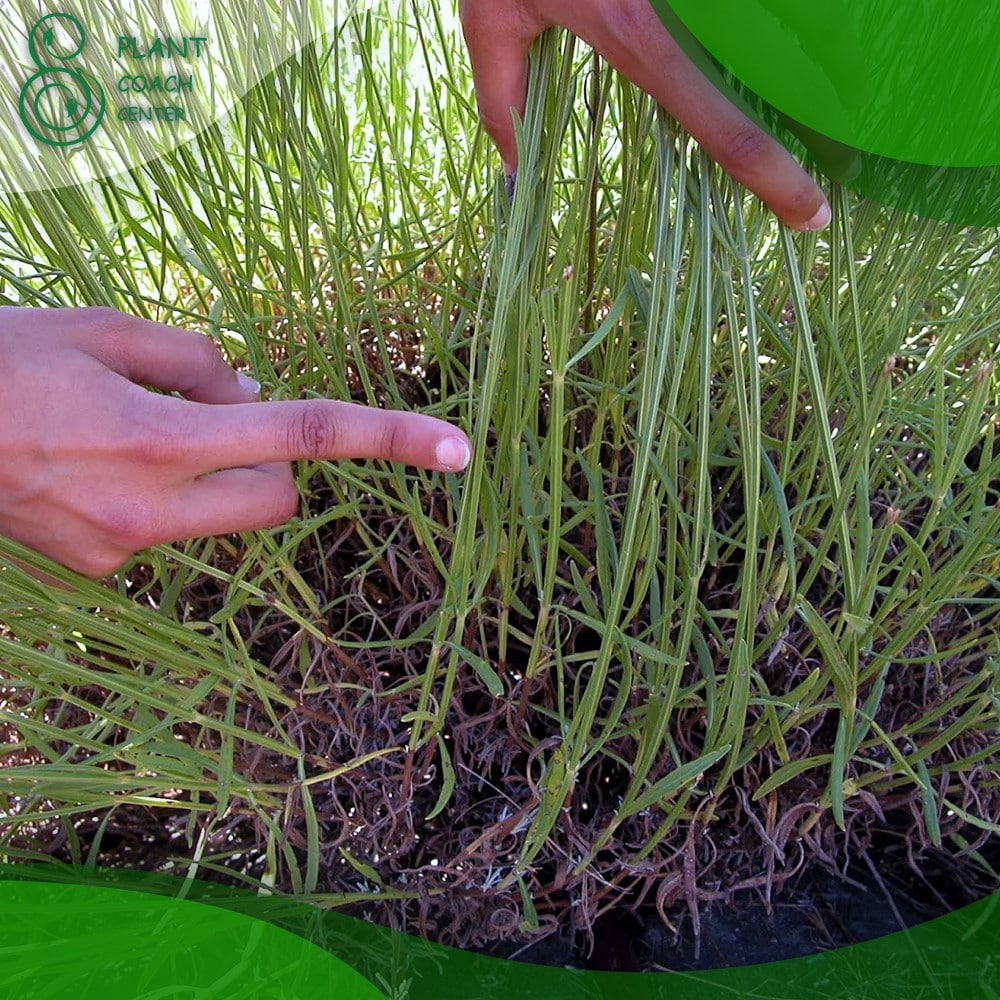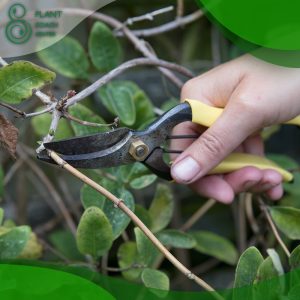When Do You Prune Lavender?
Welcome to the fragrant world of lavender care! Prized for its captivating aroma and vibrant blooms, Lavender is a beloved addition to gardens, landscapes, and indoor spaces. As you cultivate and nurture these delightful plants, understanding the art of pruning becomes essential. Pruning lavender isn’t just about maintaining a visually appealing garden; it’s about fostering your lavender plants’ health, vitality, and longevity.
This comprehensive guide will explore when and how to prune Lavender for optimal results. From deciphering the subtle cues that indicate the perfect pruning time to mastering various pruning techniques tailored to different lavender varieties, you’ll gain the knowledge needed to become a lavender pruning aficionado.
Whether you’re a seasoned gardener looking to refine your skills or a novice eager to care for these aromatic wonders, this article will equip you with insights to ensure your Lavender thrives beautifully year after year. Join us as we unlock the secrets of lavender pruning and unveil the transformative impact it can have on your gardening journey.

Timing for Lavender Pruning: Unveiling the Perfect Season
With its delicate blossoms and enchanting fragrance, Lavender flourishes when given the proper care at the right time. Pruning plays a crucial role in maintaining the health and appearance of your lavender plants. To achieve the best results, it’s essential to understand the perfect timing for pruning. The ideal lavender pruning season depends on the type of Lavender you’re growing and your region’s climate.
Spring Pruning
For most lavender varieties, spring is the optimal time for pruning. As the weather warms and new growth begins, it’s the perfect moment to shape your plants and encourage vigorous blooming. Early spring, just as new shoots emerge from the base of the plant, is an excellent window for pruning. Trimming back about one-third of the plant’s height and removing any dead or woody stems can help invigorate your Lavender and set the stage for a season of abundant growth.
Post-Bloom Pruning
After the first flush of blooms has faded, usually in late spring or early summer, consider a light post-bloom pruning. This gentle trim helps maintain the plant’s shape, prevents excessive legginess, and encourages a potential second wave of blooms later in the season. However, be cautious not to cut into the woody stems, as this could hinder new growth.
Fall Pruning
Light fall pruning can be beneficial in warmer climates or regions with mild winters; as the growing season winds down, trimming back spent flowers and shaping the plant can promote better airflow and reduce the risk of diseases that often plague Lavender during the wetter months.
How to Recognize When Your Lavender Needs Pruning
Effective lavender care begins with interpreting the signals your plants send you. With its graceful presence, Lavender lets you know when it’s time for some grooming. You can ensure timely and appropriate pruning by carefully monitoring your Lavender and recognizing these signs.
Fading Blooms
As the vibrant blossoms of your Lavender begin to lose their luster and color, it’s a clear indication that the plant is expending energy on spent flowers. Trimming off these faded blooms rejuvenates the plant’s appearance and redirects its energy towards producing new growth.
Woody and Leggy Stems
When you notice your Lavender developing long, woody stems with fewer leaves and blooms, it’s time to intervene. This leggy growth is a sign of overgrowth and can result in poor flowering and an uneven shape. Pruning back these woody stems will encourage the plant to produce fresh, vigorous growth.
Shape Distortion
Lavender is known for its elegant, mounded shape. If you observe your plant losing its defined form and becoming unruly, it’s a clear cue for some grooming. Regular pruning helps maintain the plant’s intended shape and prevents it from becoming overly bushy or sprawling.
Lack of Airflow
Lavender is susceptible to issues like mildew and rot when airflow is restricted within its foliage. If you notice dense clusters of vegetation, dead leaves, and debris within the plant, it’s time to prune for improved air circulation. This will reduce the risk of disease and promote healthier growth.
Overall Plant Health
Keeping an eye on the general health of your Lavender can reveal the need for pruning. If you spot signs of yellowing leaves, stunted growth, or signs of pest infestations, a strategic pruning session can eliminate the compromised parts and encourage the plant’s recovery.

Shaping Lavender for Aesthetic and Health Benefits
Pruning Lavender is not just about removing dead or overgrown parts; it’s an art that allows you to shape your plants for both visual appeal and improved health. Several pruning techniques to consider, each serving a specific purpose in enhancing your Lavender’s overall vitality.
Selective Trimming
This technique removes individual stems or branches that are dead, damaged, or out of place. Selective trimming helps tidy up the plant without drastically altering its shape. Use sharp, clean pruning shears to make precise cuts just above a set of healthy leaves. This method is beneficial for maintaining the neat appearance of established lavender plants.
Rejuvenation Pruning
When you notice your Lavender becoming woody, leggy, or struggling to produce vibrant blooms, rejuvenation pruning can work wonders. Cut the entire plant back to about one-third of its original size, just above healthy leaves. This drastic measure might seem intimidating, but it stimulates new growth from the base and revives the plant’s energy. Rejuvenation pruning is best performed in early spring, giving your Lavender ample time to regrow before the growing season.
Pinching and Tipping
Pinching and tipping are valuable techniques for young lavender plants or those with delicate growth. Pinching involves gently removing the top portion of new shoots between your fingertips. This encourages the development of bushier growth and prevents legginess. Tipping refers to cutting off the top few inches of stems, which promotes lateral branching and a fuller appearance.
Deadheading
Deadheading is a simple yet impactful technique to encourage continuous blooming. As individual flower spikes fade, snip them off just above a set of healthy leaves. This prevents the plant from channeling energy into seed production, redirecting it towards generating new flowers. Regular deadheading throughout the blooming season will result in a prolonged and stunning display of lavender blooms.
Shape Sculpting
If you want to maintain a specific shape or size for your Lavender, shape sculpting is the way to go. Trim the plant’s outer branches slightly shorter than the inner ones to create a gently rounded or mounded appearance. Be cautious not to cut into the woody stems, as this could hinder future growth.

Caring for Different Lavender Varieties: Tailoring Pruning to Your Plant
Lavender comes in a captivating array of varieties with unique characteristics and growth habits. As you embark on the journey of lavender care, it’s crucial to understand that different varieties may require slightly different approaches to pruning. Tailoring your pruning techniques to the type of Lavender you’re growing ensures optimal growth, health, and beauty.
English Lavender (Lavandula angustifolia)
This classic lavender variety is cherished for its sweet fragrance and compact growth. English lavender benefits from selective trimming to remove spent blooms and shape the plant. Light pruning can help prevent winter damage in late summer or early fall while encouraging new growth in the following spring.
French Lavender (Lavandula stoechas)
French Lavender stands out with its distinctive “rabbit ears” flower spikes. Prune lightly after the first flush of blooms to maintain its striking appearance. Be cautious not to cut into the woody stems, as this can impede future growth.
Spanish Lavender (Lavandula stoechas pedunculata)
Spanish Lavender is an actual statement plant with its showy bracts resembling pineapples. Prune faded flowers and trim back leggy growth in spring or fall, avoiding the woody stems. Remember to prune less heavily than with other varieties to preserve its unique form.
Lavandin (Lavandula x intermedia)
Lavandin is a hybrid lavender known for its vigor and giant flower spikes. Rejuvenation pruning is often beneficial for Lavender and is performed in early spring. This technique stimulates fresh growth from the base and encourages abundant blooms.
Woolly Lavender (Lavandula lanata)
Recognizable by its silver-gray foliage, woolly Lavender thrives with minimal pruning. Gently shape the plant by trimming dead or overly long stems, allowing its natural form to shine.
Preparing Your Lavender for the Cold Months Ahead
As summer’s warmth fades and winter’s chill approaches, it’s time to shift your lavender care focus to preparing your plants for the colder months. Pruning for winter is crucial in ensuring your Lavender’s survival and setting the stage for a vibrant resurgence in the following spring. Here’s how to ready your Lavender for the winter wonderland:
Timing Matters
Plan your winter pruning for the late summer or early fall, well before the first frost. This timing allows your Lavender to recover from the pruning stress and develop new growth before the cold weather sets in.
Gentle Trimming
Rather than a drastic cutback, opt for a gentler approach. Trim back about a third of the plant’s height, focusing on removing any dead or diseased growth. This maintains the plant’s shape while reducing the risk of snow or ice damage during winter storms.
Leave Some Growth
Avoid pruning too heavily, as some green growth acts as a protective layer against extreme cold. Cutting into the woody stems increases the chances of winter damage. Aim to leave at least a few inches of green growth above the woody stems.
Mulching
After pruning, consider applying a layer of organic mulch around the base of the plant. This offers insulation, retains soil moisture, and protects the roots from harsh winter conditions.
Protection from Snow
Try to tie the remaining foliage together gently with twine for regions with heavy snowfall. This prevents the branches from splaying out under the weight of snow and helps them maintain a more compact shape.
Potted Lavender
If you’re growing Lavender in containers, you can move the pots to a sheltered location like a garage or covered porch. This provides some protection from harsh winter conditions. You can still perform a light pruning before moving the plants indoors.

Avoiding Over-Pruning Pitfalls: Tips for Striking the Right Balance
Pruning is a powerful tool in nurturing your Lavender, but like any tool, it’s essential to use it wisely and in moderation. Over-pruning can have adverse effects on your Lavender’s health and growth. Striking the right balance between maintaining your plant’s appearance and avoiding excessive cutting requires a mindful approach. Here are some tips to help you avoid over-pruning pitfalls:
Understand Your Lavender
Different lavender varieties have varying growth habits and pruning needs. Educate yourself about the type of Lavender you’re caring for to determine how much pruning it can tolerate without stress.
Less is More
It’s easy to get carried away when snipping away at your plants, but remember that a little goes a long way. Avoid removing too much foliage, especially when performing rejuvenation pruning. A gentle touch often yields better results.
Respect the Woody Stems
Lavender’s woody stems are its foundation, and cutting into them excessively can hinder future growth. Reserve your pruning efforts for green development and avoid trimming into the wood except when necessary for removing dead portions.
Consider the Season
Pruning at the right time of year is essential. Avoid heavy pruning just before winter, leaving your plant vulnerable to cold damage. Similarly, avoid drastic cuts during the growing season, as your plant needs energy to produce blooms.
Step-by-Step Approach
Take a gradual approach if you need help with how much to prune. Trim a little and observe how your Lavender responds. If it seems to thrive, you can do a second round of pruning later if needed.
Monitor Growth
Regularly monitor your Lavender’s growth and appearance. If you notice that your plant is not producing new growth or seems stressed after pruning, it might be a sign that you’ve gone too far. Learn from these experiences and adjust your approach accordingly.
Prioritize Health
While aesthetics are important, the health of your Lavender should be the main focus. If in doubt, prioritize removing dead or diseased parts rather than shaping the plant excessively.
Learn from Mistakes
Over-pruning happens to the best of gardeners. If you accidentally trim too much, take it as a learning opportunity. Lavender is often resilient and can bounce back with proper care.

Repurposing Pruned Lavender: Creative Ways to Utilize Trimmed Cuttings
Pruning isn’t just about keeping your lavender plants healthy and well-shaped; it’s also an opportunity to harvest aromatic trimmings that can be repurposed in various creative and practical ways. Don’t let those trimmed cuttings go to waste – consider these imaginative uses for your pruned Lavender:
Aromatic Sachets
Drying your pruned lavender stems allows you to create aromatic sachets. Bundle dried Lavender in small cloth bags and place them in your drawers, closets, or under your pillow for a soothing and relaxing fragrance.
Herbal Infusions
Culinary lavender varieties can infuse beverages and dishes with a delicate floral flavor. Add dried lavender flowers to tea, lemonade, baked goods, or even homemade syrups for a unique twist on familiar flavors.
Lavender Crafts
Get crafty with your pruned Lavender by incorporating it into various DIY projects. Create lavender-scented candles, potpourri, or homemade soap bars for personalized gifts or to enhance your living space.
Natural Décor
Dried lavender stems make for charming and aromatic home decor. Arrange them in vases, make wreaths, or create table centerpieces to infuse your surroundings with rustic elegance.
Herbal Bath Soaks
Elevate your bath time ritual by adding dried lavender flowers to your bathwater. The soothing scent and natural oils the Lavender releases can help you unwind and relax.
Lavender Oil
Infuse oil with your pruned Lavender to create a fragrant and versatile oil. Use it for massage, moisturizing, or even hair treatment. Simply steep dried Lavender in a carrier oil of your choice for a few weeks and strain before use.
Culinary Delights
Lavender is not just for aromatics; it can also enhance certain dishes. Use dried culinary Lavender to add a hint of floral flavor to desserts like cookies, ice creams, and cakes. Remember to use it sparingly, as its taste can be potent.
Natural Insect Repellent
Lavender’s fragrance is known to repel insects. Place dried lavender sachets in your closet or near windows to discourage moths and other pests from entering your home.
Conclusion
In the intricate dance of lavender care, pruning emerges as a vital chore that intertwines aesthetics, health, and creativity. From deciphering the optimal timing for each variety to recognizing the subtle signs guiding your pruning decisions, this journey unveils a symphony of nurturing practices.
By mastering various pruning techniques, understanding your Lavender’s unique requirements, and embracing imaginative repurposing, you cultivate a garden and an experience that engages all the senses. As you embark on this lavender adventure, remember that knowledge and intuition are your allies, and the rewards are abundant.
For further guidance and inspiration on gardening endeavors, explore more insightful articles at PlantCouchCenter.com. Your lavender sanctuary awaits, where every snip and bloom weave together to create a tapestry of fragrant beauty that delights you and the natural world around you.
When is the best time to prune Lavender?
Lavender is best pruned after flowering, usually in late summer or early fall.
How much should I prune my lavender plants?
Aim to trim back about one-third of the plant's height, avoiding cutting into woody stems.
Can I prune Lavender in the winter months?
Avoiding heavy pruning in winter is best, as it can expose the plant to cold damage.







